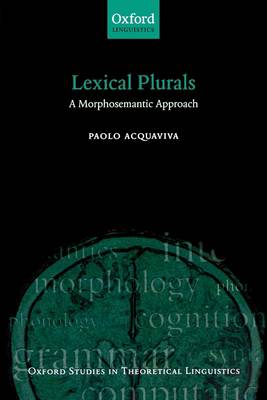
- Afhalen na 1 uur in een winkel met voorraad
- Gratis thuislevering in België vanaf € 30
- Ruim aanbod met 7 miljoen producten
- Afhalen na 1 uur in een winkel met voorraad
- Gratis thuislevering in België vanaf € 30
- Ruim aanbod met 7 miljoen producten
Zoeken
€ 104,95
+ 209 punten
Omschrijving
This book explores the wide variety of cases in which the plural of nouns is lexical. When a plural is lexicalized it becomes part of what it is to know a certain word: pence, for example, is lexical because it means a plurality of a certain kind - a multiple value, not a set of physical objects like pennies - and knowing this reading is knowing the word. Languages exhibit countless examples of similar word-dependent irregularities in the form and meaning of plural, but these have never been analyzed in depth from a unified perspective. Dr. Acquaviva aims to do just that, using analytic tools from formal semantics and theoretical morphology to shed light on the relation between grammar and the lexicon. After an introduction setting out his approach he divides the book into two parts. The first gives a structured description of the ways plurality can be lexicalized with an emphasis on description and categorization. The second analyzes in depth different types of lexical plurals in Italian, Irish, Arabic and Breton. A final chapter spells out the theoretical consequences for the analysis of the lexicon. The book is unusual in combining a broad typological classification with a unified morphological and semantic analysis based on a formal framework.
Specificaties
Betrokkenen
- Auteur(s):
- Uitgeverij:
Inhoud
- Aantal bladzijden:
- 312
- Taal:
- Engels
- Reeks:
- Reeksnummer:
- nr. 19
Eigenschappen
- Productcode (EAN):
- 9780199534227
- Verschijningsdatum:
- 15/05/2008
- Uitvoering:
- Paperback
- Formaat:
- Trade paperback (VS)
- Afmetingen:
- 155 mm x 231 mm
- Gewicht:
- 498 g

Alleen bij Standaard Boekhandel
+ 209 punten op je klantenkaart van Standaard Boekhandel
Beoordelingen
We publiceren alleen reviews die voldoen aan de voorwaarden voor reviews. Bekijk onze voorwaarden voor reviews.











